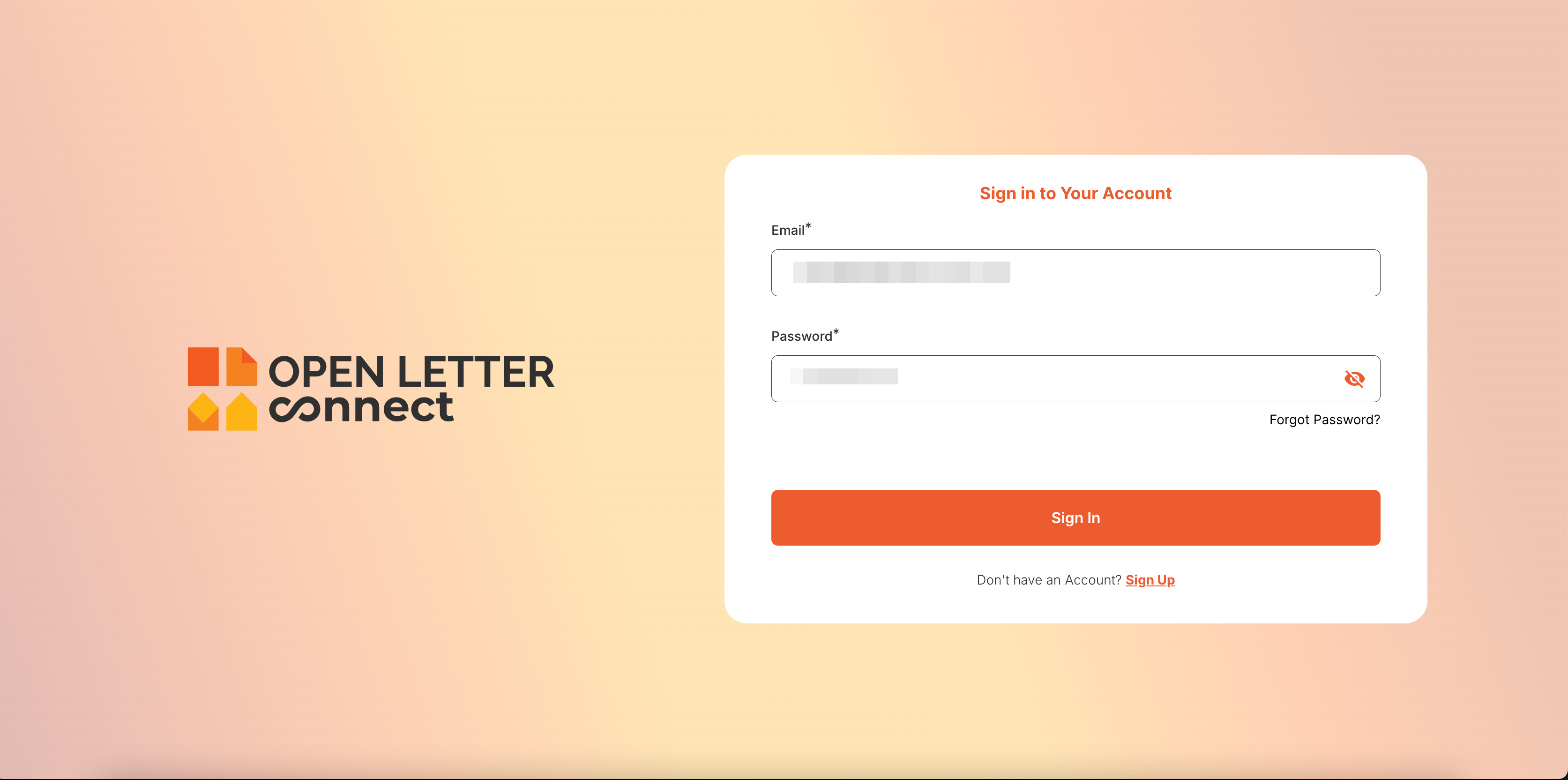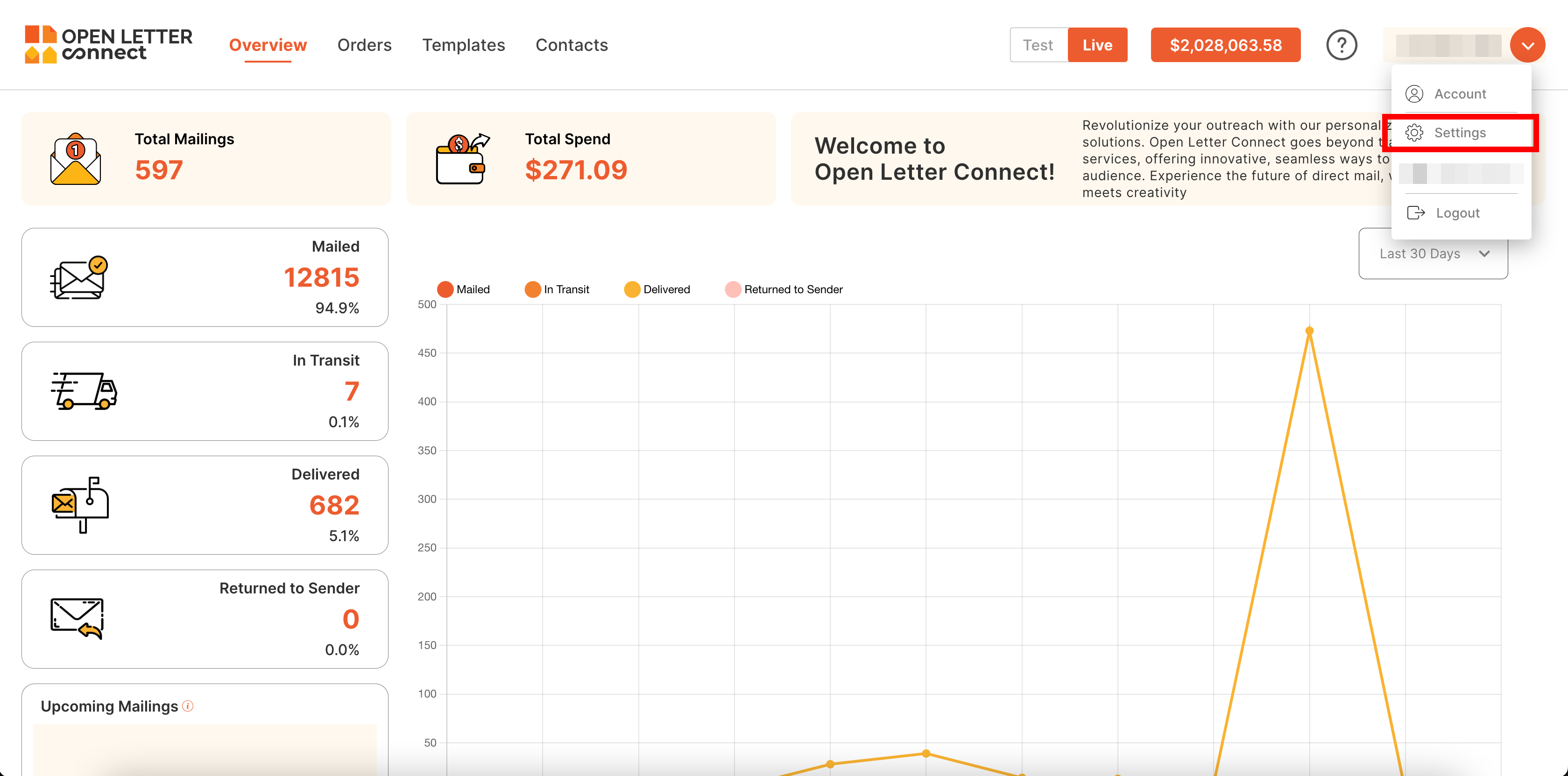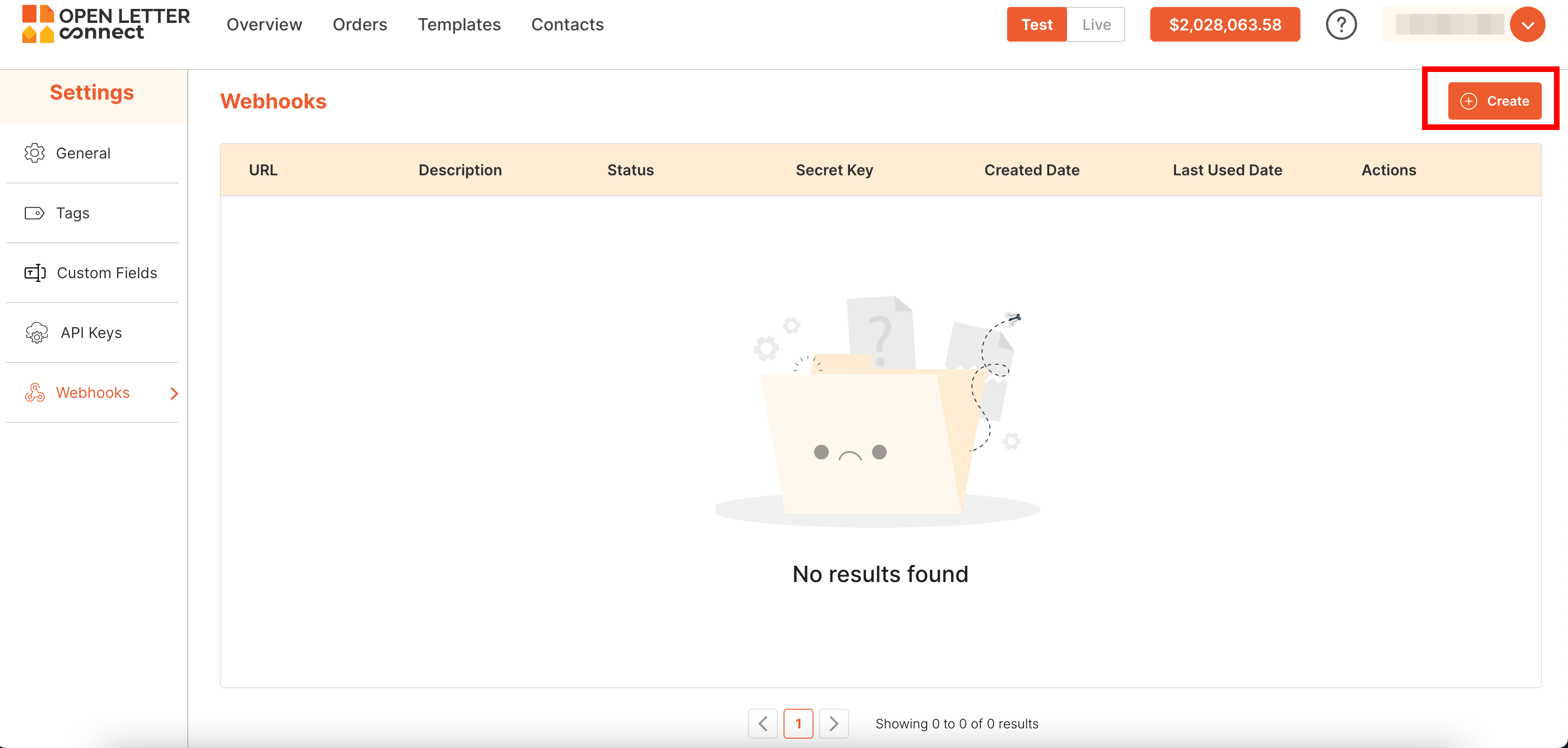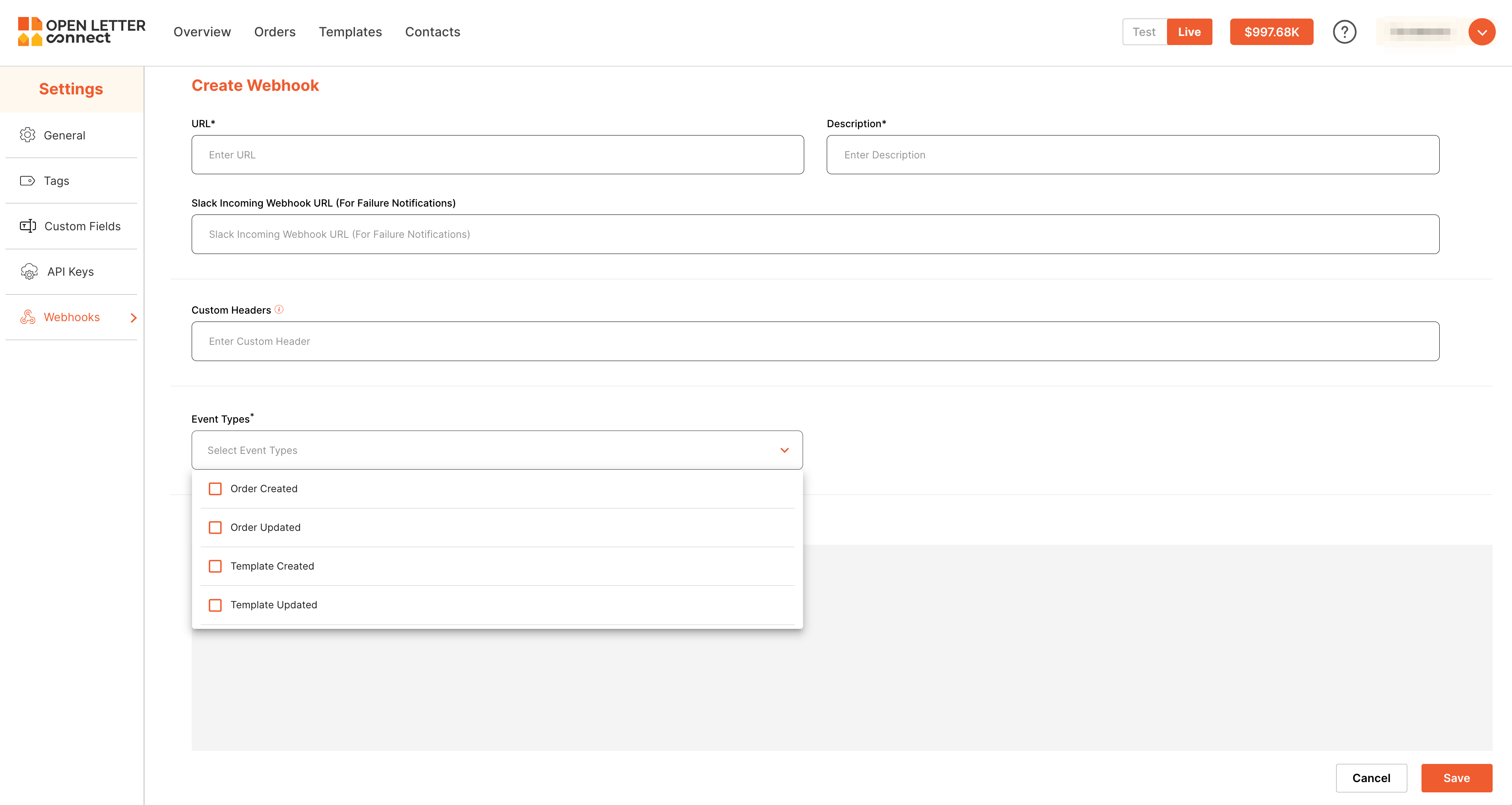Setup¶
The configuration process for webhooks in Open Letter Connect is designed to ensure seamless integration with your systems. This involves accessing the Webhook Management section, creating a new webhook, and configuring the necessary parameters like URL, custom headers, and event types. The following steps will guide you through the process:
Steps to Configure Webhooks¶
To set up webhooks with Open Letter Connect, follow these steps:
Step 1: Login¶
To access the webhook settings, you need to log in to your Open Letter Connect account:
- Go to the login page.
- Enter your email and password.
- Click Sign In to access the dashboard.
- Once logged in, the system navigate to the Overview section.

Step 2: Access General Settings¶
- In the right-side menu, click on the profile/name icon.
- The system will display a dropdown menu, click on Settings.
- The system redirects to the General Settings page

Step 3: Navigate to the Webhooks Page¶
- In the left-side menu, click on Webhooks.
- The system redirects to the Webhook Management page.

Step 4: Create a Webhook¶
Step 4.1: Start the Creation Process¶
- On the Webhook Management page, click on the Create button located on the right side.
- The system redirects to the Create Webhook page.

Step 4.2: Provide Webhook Details¶
- On the Create Webhook page, fill in the required fields:
- URL: The endpoint where webhook notifications will be sent.
- Description: A brief description of the webhook's purpose.
- Webhook Failure Notification (Optional): Slack Incoming Webhook URL (For Failure Notifications)
- Custom Headers: Any additional headers required for the webhook.
- Event Types: Select the events to subscribe to (e.g.,
orders.created,templates.updated).

Step 4.3: Save the Webhook¶
- After entering all details, click on the Save button.
- The system creates the webhook and redirects you back to the Webhook Management page.
- You can now view the list of created webhooks and manage them as needed.
- The most crucial element here is the
Secret Key, which you must copy and save. This Secret Key will be included in all webhook payloads as atokenfor verification purposes.
